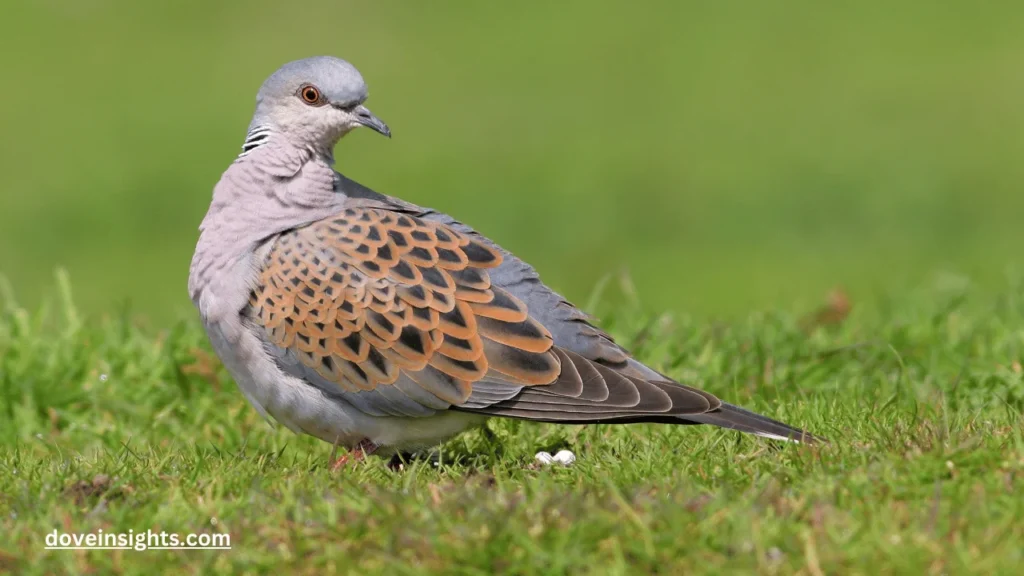There’s a peacefulness that accompanies the presence of mourning doves—their gentle cooing and graceful flight often evoking a sense of calm and serenity.
As one of the most recognizable and beloved birds across North America, mourning doves are frequently seen in gardens, parks, and backyards, their soft sounds providing a soothing soundtrack to many outdoor environments.
But while these birds are synonymous with tranquility, it begs the question: Are mourning doves truly friendly?
Despite their gentle appearance and serene nature, mourning doves are not always the peaceful creatures they may seem. Some birdwatchers and nature enthusiasts have observed that, like many species, mourning doves have specific behaviors that suggest they can be more complex than just their quiet demeanor.
Are they social with humans or do they maintain a more reserved, wild nature? And what does “friendly” mean when we’re talking about animals—especially wild ones like mourning doves, who are typically not domesticated or trained to interact with humans?
This article will explore the concept of friendliness in mourning doves by looking into their behavioral traits, natural instincts, and the ways they interact with their environment and humans.
Whether you’re a bird enthusiast wondering how to attract these lovely birds or just curious about their temperament, understanding the true nature of mourning doves requires diving into both their social habits and their wild instincts. So, are mourning doves friendly?
Let’s explore the facts, dispel some myths, and gain a deeper understanding of these fascinating creatures.
Contents
- 1 Mourning Doves: Overview of Their Behavior and Personality
- 2 Mourning Doves and Their Interaction with Humans
- 3 Mourning Dove Behavior During Breeding and Nesting Seasons
- 4 Mourning Doves as Pets: Can They Be Domesticated?
- 5 Mourning Doves in Urban Environments: Friendliness and Adaptation
- 6 Conclusion:
- 7 FAQ’s
Mourning Doves: Overview of Their Behavior and Personality
Mourning doves are often perceived as gentle, docile, and non-aggressive birds. Their serene cooing sound is one of the most recognizable bird calls in North America, and their quiet, graceful flight adds to their peaceful reputation.
Mourning doves tend to flock together, especially during migration, and can be seen in large numbers around food sources or resting spots.
However, these social birds aren’t always as friendly as their calm demeanor might suggest. While mourning doves may seem calm and approachable, they are still wild animals.
Their behavior is typically dictated by survival instincts rather than a desire for companionship with humans. Mourning doves will often avoid direct human contact and are easily startled by sudden movements.
Unlike some domesticated animals, such as dogs or cats, mourning doves do not actively seek interaction with humans.
That said, their friendliness can be interpreted differently depending on what you’re expecting from the bird. They may not approach humans willingly or actively seek attention, but they are not aggressive.
Instead, mourning doves show their comfort with people by tolerating their presence, often staying in the same area without showing signs of fear. For the most part, they prefer a peaceful environment where they can go about their daily routines—finding food, nesting, and flying without disturbance.
Mourning Doves and Their Interaction with Humans
While mourning doves are not known for actively seeking human interaction, they can exhibit certain behaviors that might seem friendly to someone watching from a distance.
For example, mourning doves often allow humans to observe them at close range, especially if the bird is in a safe environment where they don’t feel threatened. Many people report seeing mourning doves perch on fences, bird feeders, or even patios with little concern for the people nearby.
This tolerance of humans doesn’t mean mourning doves will seek direct interaction. Instead, their “friendliness” is more about coexistence. These birds are non-aggressive and will not attack or chase humans.
Unlike some species that may become territorial or defensive, mourning doves tend to be passive and will often fly away if they feel threatened. They rarely show signs of aggression and are not known to engage in territorial disputes with humans or other animals.
It’s important to note, though, that wild doves will remain wild and, despite being calm, they are not domesticated birds.
This means they will still prioritize their independence and safety, choosing to flee rather than stay in close proximity to humans for long periods of time. However, they are more likely to adapt to human presence over time if they feel safe and unthreatened in their environment.
Mourning Dove Behavior During Breeding and Nesting Seasons
During breeding season, mourning doves may appear slightly more approachable due to their desire to find mates and build nests. During this time, male doves are known for their courtship rituals, which include displaying to females with their distinctive cooing sounds.
The male’s courtship displays might make them seem more engaged in their environment, including humans, especially if the dove feels secure in its habitat.
However, while they may appear more active, mourning doves are still far from aggressive. They may defend their nesting areas, but they are more likely to fly away rather than confront potential threats head-on.
Mourning doves are not known for being territorial in the same way other birds are, and they tend to share spaces with other doves, especially during migration.
Even during the breeding season, mourning doves are not interested in human interaction beyond what is necessary for survival.
Their instincts guide them to focus on finding food, caring for their young, and avoiding danger, which means they are more focused on mate selection and nest building than establishing any relationship with humans.
Mourning Doves as Pets: Can They Be Domesticated?
While it might be tempting to think of mourning doves as friendly pets due to their calm and non-aggressive nature, it’s important to understand that these are wild birds. Mourning doves are not typically domesticated or suitable for living as pets in human households.
Their wild instincts make it difficult for them to thrive in captivity, and they do best in their natural environments.
Mourning doves do not require direct human interaction to thrive. They have specific needs, such as access to open areas for flight, specific nesting sites, and appropriate food sources like seeds and grains. Keeping mourning doves as pets could also lead to issues related to their freedom and natural behavior.
Wild doves are meant to fly long distances, form flocks, and seek shelter in safe, undisturbed places, and forcing them into a domestic setting may cause stress and discomfort.
If you’re interested in having mourning doves around, it’s best to attract them to your yard by creating a bird-friendly habitat that includes food, water, and safe perches. By respecting their wild nature, you can still enjoy their presence without compromising their well-being.
Mourning Doves in Urban Environments: Friendliness and Adaptation

Mourning doves are incredibly adaptable, which is why they are commonly found in urban environments as well as rural ones.
These birds have learned to coexist with human activity, and they are frequently spotted in cities and suburbs, where they nest on windowsills, rooftops, and even in urban parks.
Their ability to adapt to these areas has led many to perceive them as more friendly than other wild birds, as they seem unbothered by the noise and hustle of daily life.
In urban areas, mourning doves may become accustomed to the presence of people, especially in places where they are regularly fed or find abundant food sources. As a result, they may appear more relaxed and tolerant of human activity, but this should not be mistaken for active friendliness.
Mourning doves that thrive in cities have simply learned to coexist with their human neighbors, but they are still very much wild animals that value their independence and space.
Mourning doves in urban environments also face unique challenges, such as predators and habitat loss, which makes their quiet nature a survival advantage. They tend to stay out of sight when they feel threatened, yet they will adapt to urban landscapes where they find food and shelter.
Conclusion:
Mourning doves, with their serene appearance and gentle cooing, may seem like the epitome of friendliness, but the truth is more nuanced.
While these birds are generally non-aggressive and calm, their interactions with humans are defined by their wild instincts and need for independence. Mourning doves do not actively seek human companionship, nor do they form the types of bonds with people that some domesticated animals do.
Instead, they coexist peacefully, allowing humans to observe them without feeling threatened.
Ultimately, mourning doves are friendly in their own way. They are approachable in the sense that they are not confrontational and will tolerate human presence, but they are also wild creatures that prefer to live on their own terms.
If you wish to enjoy the company of these beautiful birds, it’s best to respect their nature, provide a bird-friendly environment, and appreciate the serenity they bring without attempting to domesticate them.
Understanding and accepting the true nature of mourning doves allows us to enjoy their peaceful presence in a way that respects their independence and wild beauty.
FAQ’s
Are mourning doves friendly to humans?
Mourning doves are generally non-aggressive and peaceful birds, but they are not particularly social with humans. They tend to tolerate human presence from a distance rather than actively seeking interaction. Their behavior can be interpreted as friendly because they will allow humans to observe them without fleeing immediately. However, they do not engage in social behaviors like some other animals, and they usually avoid direct contact unless they feel completely safe.
Can mourning doves be kept as pets?
Mourning doves are wild birds and are not typically suited to be kept as pets. While they may seem calm and approachable, they are not domesticated and do best in their natural habitat. Attempting to keep a mourning dove as a pet can be stressful for the bird, as it needs to fly freely and interact with other doves. Instead, it’s best to create a bird-friendly environment in your yard to attract them, allowing you to enjoy their presence without the need for captivity.
How can I attract mourning doves to my yard?
To attract mourning doves, create a welcoming habitat with food, water, and safe places to perch. Doves enjoy eating seeds, especially sunflower seeds, millet, and cracked corn. Providing birdbaths or shallow water sources is also helpful, as doves need water for drinking and bathing. Additionally, planting trees or shrubs can offer natural shelter and nesting spots. Offering food and maintaining a peaceful environment will encourage mourning doves to frequent your yard.
Are mourning doves territorial?
Mourning doves are generally not considered highly territorial birds. Unlike some species, they do not aggressively defend specific areas or nesting sites. During breeding season, males may show some territorial behavior by calling or displaying to attract a mate, but they are more likely to share their space with other doves. They are primarily focused on finding food and avoiding threats, rather than defending territory.
Do mourning doves show affection or bond with humans?
Mourning doves do not typically form emotional bonds with humans in the way some domesticated animals do. They do not seek affection or companionship and will generally not respond to petting or handling. While they may appear calm and tolerant of human presence, this is more a reflection of their passive nature than an indication of affection. They are wild birds, and their behavior is driven by survival instincts rather than a desire for human connection.
Why do mourning doves seem so calm?
Mourning doves are naturally calm and non-confrontational. They rely on their ability to blend in with their surroundings and remain unnoticed to avoid predators. Their calm behavior is also a survival strategy, as they prefer to fly away rather than engage in conflict. This calmness makes them appear friendly, but it is simply their way of staying safe in the wild. Mourning doves are more likely to remain quiet and still than to take an aggressive stance.








